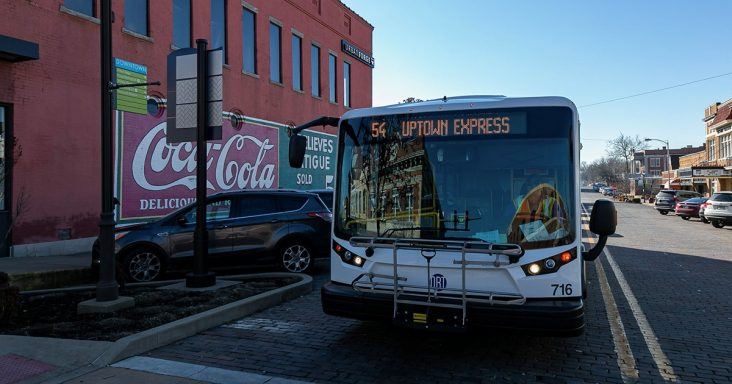Ozark Regional Transit ridership hits 7-year high
by February 7, 2024 12:51 pm 977 views

Springdale-based Ozark Regional Transit saw ridership rise to a seven-year high as ORT’s on-demand transit service more than doubled its passengers last year.
The transit provider’s ridership rose by 34.6% to 272,023 in 2023 from 202,060 in 2022. Ridership hasn’t been higher since 2016, which was a record year. In 2016, ridership rose to 319,060 from the previous high of 317,448 in 2015.
Compared to pre-pandemic levels, 2023 ridership was up 87 passengers from 271,936 in 2019.
“The growth of (on-demand transit) has greatly enhanced our ability to recover to pre-pandemic ridership numbers,” said Jeff Hatley, public information officer for ORT.
According to ORT data, on-demand transit accounted for 110,403 passengers in 2023, or more than 40% of ridership last year. On-demand transit ridership rose by 155% in 2023 from 43,284 passengers in 2022. It rose by 390% in 2022 from 8,825 in 2021. It increased by 37% in 2021 from 6,439 passengers in 2020.
In January 2020, Rogers became the second U.S. city to offer on-demand transit service and the first to offer it without a fare, Hatley said previously. On-demand transit service has since expanded to Bentonville, Fayetteville and Springdale. On-demand transit is like a ride-sharing service but for public transit.
Since 2020, passengers have been able to ride ORT buses without paying a fare. Three grants from the Walton Family Foundation have supported the zero-fare program. Fayetteville passengers have been able to ride ORT buses without fares since summer 2018.
Recently, the ORT board approved establishing a $1.25 fare per trip for on-demand transit. Hatley said the new fare is expected to start sometime in the first quarter of this year. ORT’s fixed-route and paratransit services will remain zero-fare.
“Our board [members], representing all four core cities, were clear that they wanted to encourage more fixed-route travel,” Hatley said. “It’s more cost-effective and is the most effective form of public transit.”
